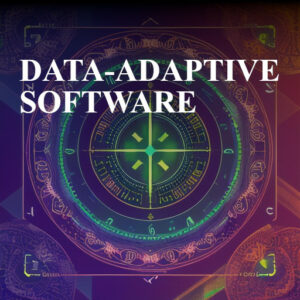Data-Adaptive and Data-Resilient Software
 Recently, I completed a project that required handling a data source with an inconsistent structure and non-standardized data (commonly referred to as dirty data). Each record contained over 400 fields, but the order of these fields varied unpredictably from one record to the next. The data also suffered from inconsistencies within the fields themselves. For example, some records used abbreviations, while others spelled out terms in full. To complicate things further, the data was accessed through a RESTful API (Representational State Transfer).
Recently, I completed a project that required handling a data source with an inconsistent structure and non-standardized data (commonly referred to as dirty data). Each record contained over 400 fields, but the order of these fields varied unpredictably from one record to the next. The data also suffered from inconsistencies within the fields themselves. For example, some records used abbreviations, while others spelled out terms in full. To complicate things further, the data was accessed through a RESTful API (Representational State Transfer).
The Challenge
Dynamically importing this data directly from the REST API into the target application proved to be problematic. The import script would identify malformed records and skip them entirely, resulting in data loss. While the script was resilient in that it could continue functioning despite encountering errors, it was not adaptive. It lacked the ability to intelligently handle the varying structure of the source data.
In simpler terms: the source data was a mess, and I needed to develop a solution that could intelligently manage it.
The Solution: A Staged ETL Approach
To resolve this issue, I applied a staged approach using the ETL process (Extract, Transform, Load), a common method for dealing with problematic data. Here’s how the ETL process works:
- Extract: Data is pulled from one or more sources (such as databases, files, or APIs) and stored in a temporary location.
- Transform (also known as “Data Scrubbing/Cleaning”): The extracted data is analyzed, cleansed, and standardized. This step resolves inconsistencies and errors, transforming the data into the desired structure for the target system.
- Load: The cleaned and standardized data is then imported into the target system, such as a database or application, for end-user access.
For this project, I implemented a data-adaptive approach, which not only ensured resilience but also allowed the software to intelligently handle and cleanse the dirty source data.
Implementing the Data-Adaptive Approach
The concept is straightforward. First, use the API to retrieve the data records and store them in a temporary intermediary file, without attempting any corrections or cleansing at this stage. This essentially dumps the data into a location where it can be processed using a programming language and tools of choice.
During the Transform phase, the software analyzes each row of data to determine the location of each required data field. In simple terms, this step “finds” the relevant data in each record, even when the structure is inconsistent.
Once the necessary data fields are identified and their locations known, the software can iterate through each row, applying logic to cleanse and standardize the data. Afterward, the cleaned data is written into a new, properly structured file that is consistent and ready for import into the target system.
Enhanced Transformation Logic
During the transformation process, I incorporated some additional features. Based on the presence or absence of certain data in each record, the software dynamically generated new data fields that might have been missing from the source. This approach allowed the system to compensate for incomplete records, further improving data integrity.
Pseudocode for the Solution
Here’s a simplified version of the process in pseudocode:
// Step 1: Retrieve data records from the source system
sourceData = retrieveDataFromSource()
// Step 2: Create a map of required data fields and identifiers
fieldMap = createFieldMap([
{fieldName: "Field1", identifier: "SourceField1"},
{fieldName: "Field2", identifier: "SourceField2"},
// Additional field mappings as needed
])
// Step 3: Initialize an array to store cleansed data
cleansedData = []
// Step 4: Loop through each row in the source data
for each row in sourceData:
// Step 5: Analyze the row using the map to identify required data fields
requiredFields = []
for each field in fieldMap:
requiredFields.append(findField(row, field.identifier))
// Step 6: Cleanse and standardize each required data field
cleansedRow = []
for each field in requiredFields:
cleansedRow.append(cleanseAndStandardize(field))
// Step 7 (Bonus): Dynamically add new fields based on business logic
if businessLogicConditionMet(row):
cleansedRow.append(createAdditionalField())
// Step 8: Store the cleansed row in the output file
cleansedData.append(cleansedRow)
// Step 9: Save cleansed data to the target platform
saveToTargetPlatform(cleansedData)
Explanation:
Step 1: Retrieve the dataset from the source.
Step 2: Map the required fields and their attributes to locate them in the source data.
Step 3: Initialize an array to store the cleansed data.
Step 4: Loop through each row of source data.
Step 5: Identify the required data fields in the current row using the field map.
Step 6: Cleanse and standardize each identified field.
Step 7 (Bonus): Add extra fields based on business logic, dynamically creating new fields if needed.
Step 8: Store the cleansed row of data in the output array.
Step 9: Once all rows are processed, save the cleansed data to the target platform for further use.
Conclusion
By employing a data-adaptive approach, I was able to successfully manage a problematic data source with inconsistent structure and content. This solution not only made the system resilient to errors but also capable of dynamically correcting and adapting to the data it processed. The staged ETL approach, with enhancements during the transformation phase, ensured that the data was accurately cleansed and properly structured for importing into the target application.

